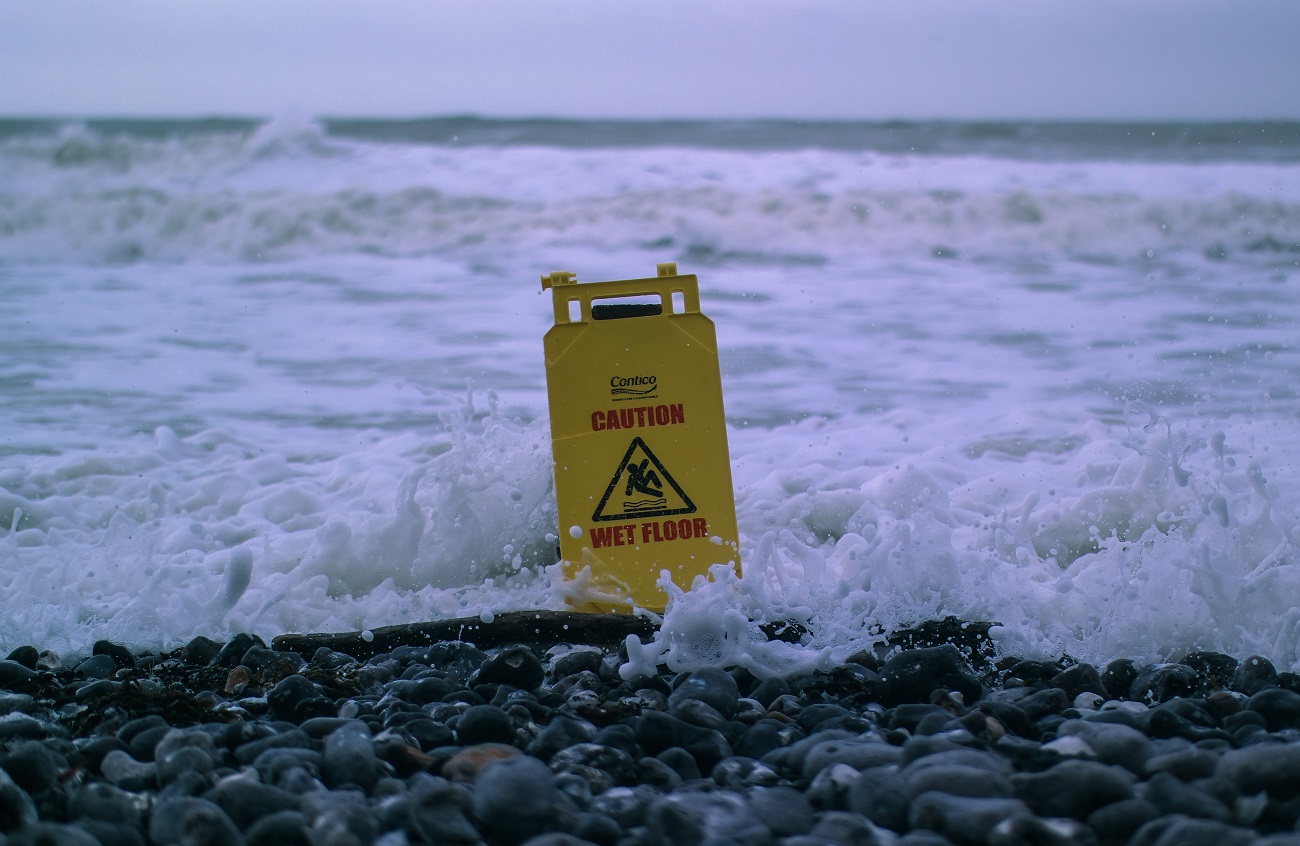
This blog will give you EVERYTHING you NEED to know about office health and safety. Filter through and find health and safety areas that fit you to make sure that you aren’t breaking any health and safety laws.
Index:
What is Health and Safety in the Workplace?
Sometimes referred to as ‘workplace health and safety’, occupational health and safety defines the right to work within a safe environment, which by law every employee is entitled to and every employer must provide.
Find out what your health and safety commitments are and how to meet them.
The Most Relevant Office Health and Safety Legislation and Regulations
As you should be aware, a safe working environment is essential and compulsory by law for all businesses.
Not addressing your health and safety commitments can leave you open to serious prosecution and other implications for both the business and the people in charge.
To help you ensure your staff are productive, safe and that your business is complying with the law, we have compiled a list of what we think are the most important health and safety legislations and regulations within the United Kingdom’s health and safety law.
1. The Management of Health and Safety at Work Regulations 1999
Occasionally referred to as the Management Regulations, this states that an employer has a duty to provide health and safety information and training to employees.
This means that a business must provide a written health and safety policy and have at least one assigned employee, a health and safety rep, to ensure that the workplace is complying with health and safety laws and legislation at all times. To do this the safety rep is required to conduct and act upon risk assessments.
2. The Workplace (Health, Safety and Welfare) Regulations 1992
This regulation requires the employer to ensure that working conditions of their employees are adequate including things such as heating, lighting, and toilets.
3. The Health and Safety (Display Screen Equipment) Regulations 1992
As the name suggests, this regulation is for workers who use a computer as part of their daily tasks or rely on the use of a screen to conduct their job.
It is required for an employee to perform a risk assessment on workstations ensuring that there is no defective equipment, that you are using the correct posture and you have the correct eye height for your monitor. It is important to actively use these risk assessments to eliminate any associated risks.
In addition to providing adjustable equipment to avoid any injuries due to posture, an employer must also offer free eye tests, health and safety information and glasses to their employees if they are required.
4. The Personal Protective Equipment at Work Regulations 1992
Although personal protective equipment (PPE) isn’t as common in an office space, an employee is required to provide employees with any necessary protective equipment to enable them to perform tasks safely free of charge and then instruct the employee on how to use the equipment correctly.
5. The Manual Handling Operations Regulations 1992
Manual handling such as moving or lifting items, if done incorrectly can result
This regulation requires employers to assess all risks associated with any manual handling, such as moving or lifting items. The regulation also requires the need for employees to have to perform any manual handling to complete a task to be minimised wherever possible.
It is also a requirement for the information on the weight of each load to be available to employees.
6. The Provision and Use of Work Equipment Regulations 1998
It is required that all employers ensure that work equipment is regularly maintained to ensure it is safe and suitable for the intended purpose, as well as providing information and training on how to use the equipment.
It is also a must that potentially dangerous machinery such as drills and saws are fitted with screens and cut off switches wherever possible in order to protect employees.
7. The Reporting of Injuries, Diseases and Dangerous Occurrences Regulations (RIDDOR) 1995
This requires an employer to report any work-related injury or disease to the Health and Safety Executive (HSE), which is a UK government agency, or local health authority by recording all incidents within an accident book
It is important that when recording incidents as much information is included as possible.
Incidents which must be recorded include:
- Death
- Any injuries which require medical attention
- Any incident which leaves an employee unable to work for more than seven days
Any of the following occupational injuries must also be recorded:
- Forearm/hand cramp caused by repetitive movement
- Carpal tunnel or any hand-arm injury
- Asthma
- Dermatitis
- Any type of tendon injury
8. The Working Time Regulations 1998
Working time regulations means that workers cannot lawfully be required to work more than an average of 48 hours a week, but an employee is able to opt-out of this limit and work more than 48 hours a week but must do so voluntarily and in writing.
These regulations also state that workers require an 11-hour minimum daily rest period paired and uninterrupted 20-minute daily rest breaks for shifts with over 6 hours of work (exceptional circumstances can apply if they are made to comply with regulations).
9. Employment of Young Workers
As an extension of the Working Time Regulations, young workers (aged 15-18) are entitled to 30 minutes of uninterrupted breaks during a workday of more than 4.5 hours and a 12-hour break in each 24-hour period of work.
Young workers are also entitled to at least 48 hours of rest in any seven day period and cannot work more than 8 hours in a single day or over 40 hours a week.
Note: These cannot be converted into an average time. Young workers have no opt-out option and unlike adults cannot be made to take rests over 2 days averaged over 2 weeks.
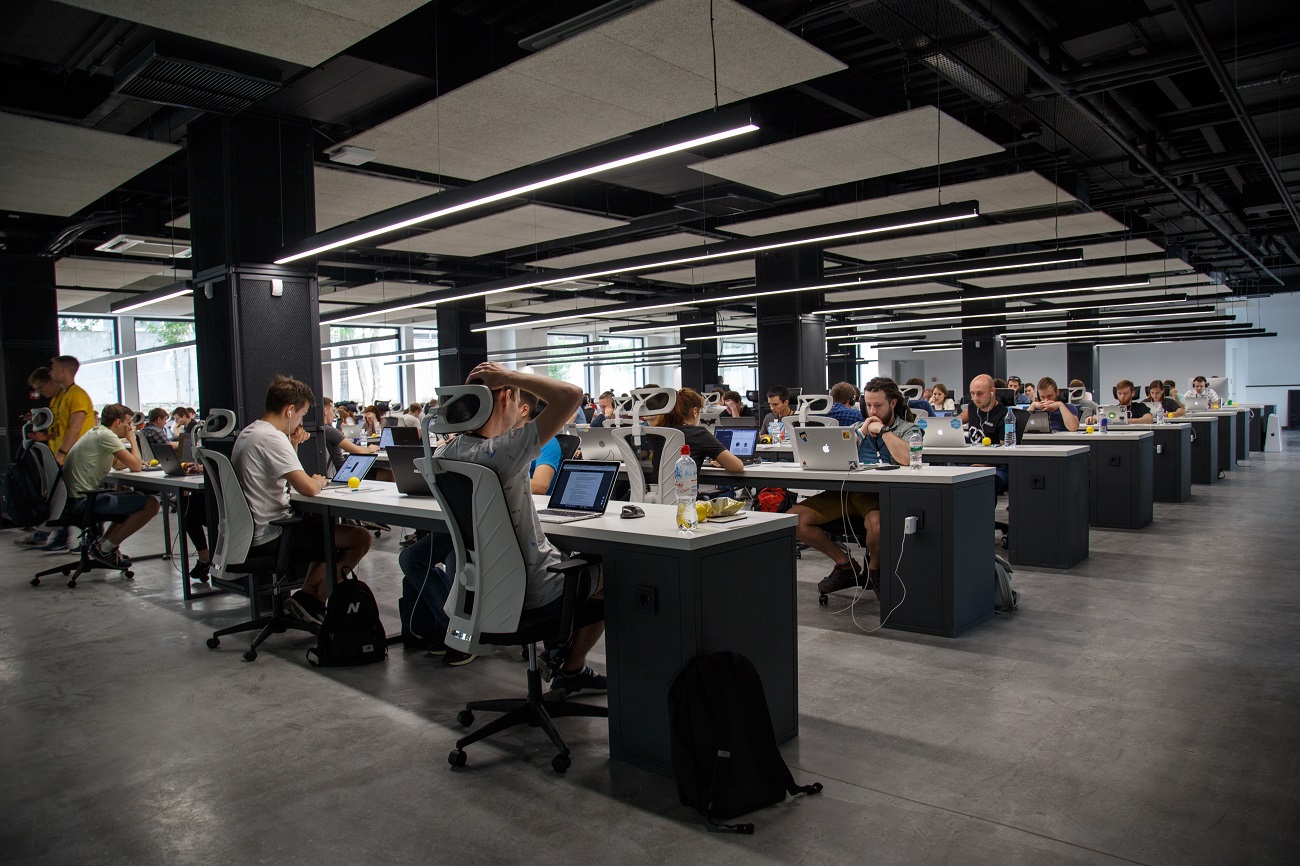
Different Working Environments
When it comes to office work, situations may arise where an employee may have to work offsite, such as business trips, working from home and working from a client’s office.
As an employer, it is your responsibility to ensure that your employees are operating within a safe working environment whether in the office, at home or elsewhere to keep them safe, avoiding injury or illness.
Although employees working offsite can easily turn into a case of ‘out of sight out of mind’, it is important that even when out of the office, you are ensuring that their working environment is safe.
10. Regular Office
As previously stated, employers have a responsibility to ensure the main office space is complying with health and safety standards and regulations. This is to keep all staff safe and healthy.
11. Working From Home
If you have staff who regularly work from home, whether it is for personal reasons or because of their job role, it is still your responsibility to make sure that they are operating within a safe workspace.
Ensure that your employees are safe and that as an employer, you are covered, by carrying out a suitable risk assessment at every location where an employee regularly conducts work.
12. Client Locations
If a member of staff regularly visits client locations for meetings or for other work, it is vital to ensure that regular risk assessments have been conducted by the client.
It is also important that you set clear visiting parameters to protect your staff and ensure they are aware of what the visit should include.
13. Business Trips
Similar to any client locations, any employee business trips should also have clear parameters to ensure that the employee knows that they are expected to act as if they were in the office and what is and isn’t expected of them during the trip.
14. Meeting Rooms
If you are using a shared meeting room or conducting a meeting somewhere that isn’t regularly maintained, it is important that the room is evaluated and that any potential risks are documented and removed before meetings are conducted.
15. Public Workspaces
Public workspaces, such as libraries or co-working spaces, will always have their own health and safety protocols. However, it is still important that you, as an employer, ensure your employees are working in a safe environment and aren’t put at risk.
Most Common Workplace Injuries
There are thousands of incidents that occur each year at work. While it is true that even the most prepared workplace can still fall victim to a workplace accident, preparation can reduce both its likelihood and implications.
To help you prepare as an employer, we have listed the most common injuries that happen in the workplace so you can protect yourself and your staff.
16. Falling
Everyone you know will have a story of either them or someone they know injuring themselves by falling at work. So it’ll come to you as no surprise that falling is the most common workplace injury.
All it takes to cause someone to fall is leaning too far back on a chair, an unstable table or a loose wire that is left on the floor.
Make sure you protect your employees and yourself by not only conducting risk assessments but also ensuring your staff know how they should act within an office environment. This can be achieved with clear rules regarding running, climbing and other activities which could increase risk.
17. Slipping
An accident caused by a slip is possible in any environment and is quite hard to plan for. A small spillage and an unaware employee could result in a nasty accident or serious injury.
This is why it is important to not only have wet floor signs but also for employees to be aware of where these floor signs are and when they need to be used.
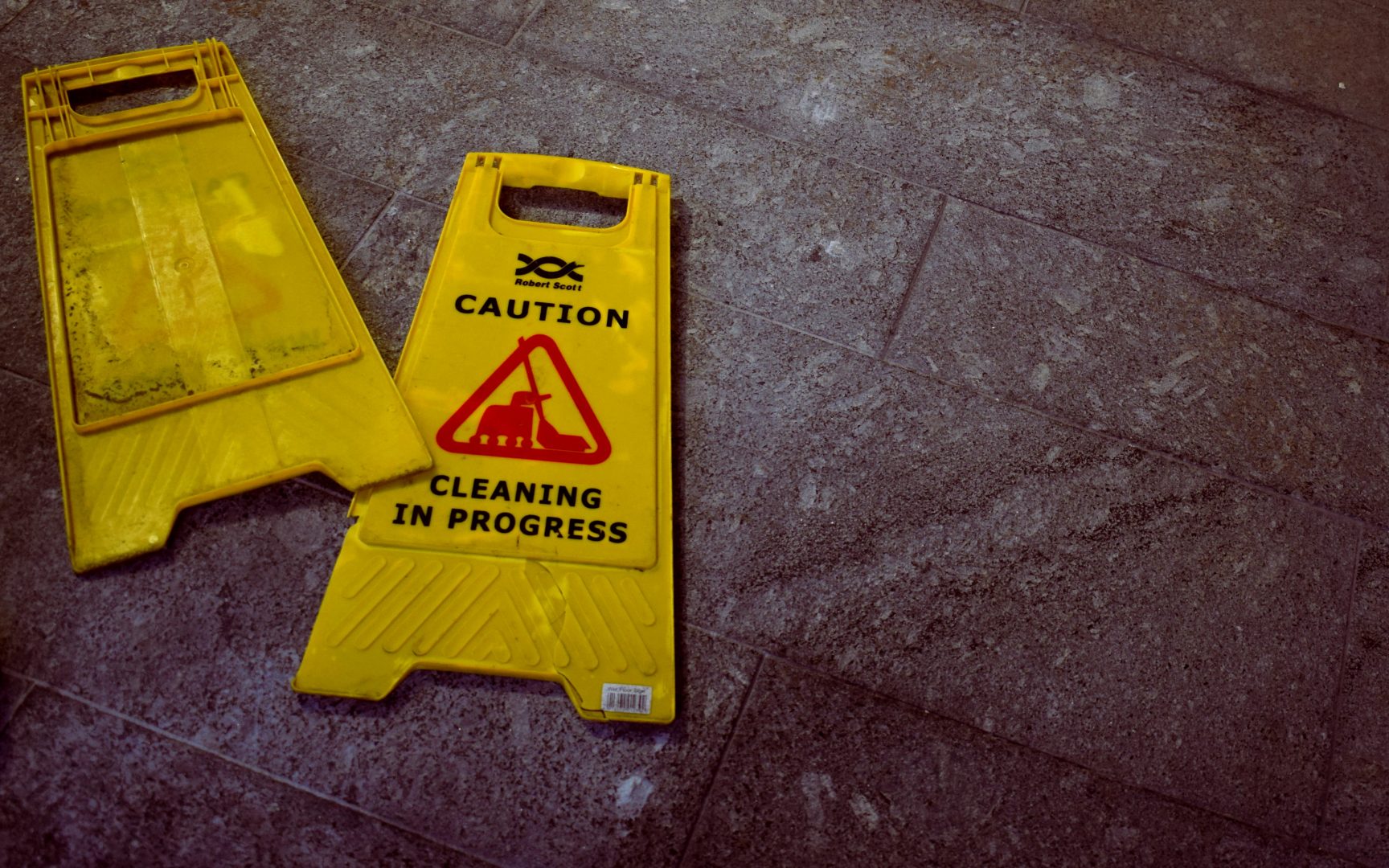
18. Tripping
A trip can occur anywhere and at any time, whether it is a loose wire, a misplaced bag or even some loose carpet, hazards like this are easy to overlook, but can easily result in an employee tripping and seriously hurting themselves.
In fact, it is quite likely at some point that someone, somewhere in your office is going to trip. However, you can reduce its likelihood and the resulting injury by conducting risk assessments.
19. Overexertion
Overexertion is something that is easily done in any environment and is difficult to avoid. Overexertion is usually caused by someone trying to lift or move something heavier than their capabilities or incorrectly.
The need to move something heavy within an office environment is rare, but can be required on the odd occasion. Because of this, the only way to avoid injuries is by ensuring all employees know how to lift objects correctly and know to ask for help when lifting a heavy object. This should be done for any workplace.
20. Repetitive Strain
Repetitive strain is a very common issue within an office environment, which can be
caused by being confined to a desk using a mouse and keyboard for long periods of time. As an employer, it is important that your employees have access to everything they may need to avoid this occurring.
Case study: two beauty therapists who conducted regular pressure point massages as part of their daily jobs began to feel pains extending from their hands up to their shoulders. The beauty therapists claimed this was due to applying large amounts of pressure to patients via their fingers and thumbs. As a result, the workers were awarded £9,000 and £12,000 in damages.
21. Hit by Objects
Although falling objects may not be something you think you should need to worry about in an office, it is very common for people in office environments to attempt to retrieve something out of reach or even get accidentally hit by an object.
This shows how important it is for regular risk assessments to be carried out and for staff to understand how to stay safe in a work environment.
22. Collision
It is common for people to hurt themselves as a result of accidentally walking or knocking into something. Although it is usually only minor, it can easily result in a larger incident and injury.
To avoid any serious injuries, it is important for employers to ensure that all walkways are clear with enough room to stop people bumping into objects or other employees.
23. Inhaling or Consuming Chemicals
Although there aren’t many ways this can affect an office environment, it is still a serious injury and should be avoided at all costs.
While it is your responsibility as an employer to ensure that the workspace is clean, it is also important that you ensure that any cleaning products cannot be accidentally consumed or inhaled.
24. Workplace Fight
Although rare, employees can be seriously injured by fighting with another employee or anyone else within the workplace.
Clear rules regarding how employees should act within certain situations should be set out, as well as active calming measures to de-escalate any situations that may arise to help avoid any repercussions.
25. Fire
Fire is an obvious risk at any workplace and can cause severe injuries or even death in seconds. Having regular fire risk assessments and training educates your staff on fire exits, extinguishers and rules that they must follow to keep them safe.
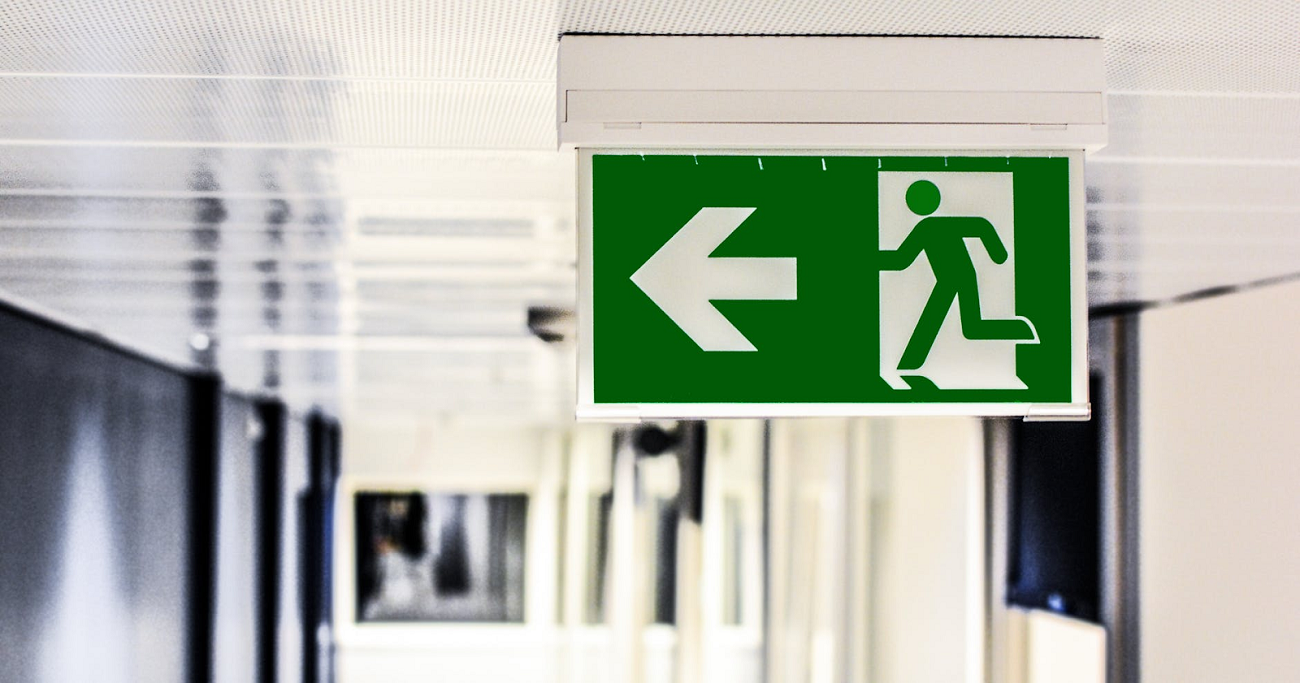
26. Electrocution
Like fire, electrocution is a danger in most work environments and is capable of causing severe injuries in seconds, and in some cases, even fire. As an employer, you must ensure that you have conducted safety measures and electrical maintenance to remove the risk of your staff being electrocuted.
27. Cuts
Cuts can be caused as a result of poor training, ignorance or lack of awareness when dealing with sharp objects. As an employer, it is your responsibility to ensure that all staff are trained to use any equipment and that sharp objects don’t become a hazard in the workplace.
Case study: A man won over £2,000 after it was ruled that his employer was to blame for an unstable block of shelves which fell hitting and cutting the man’s head. The injury left the man with a permanent small scar.
28. Lack of training
Regular health and safety training gives you the ability to limit the extent of an injury drastically. In the event of any injury, a first aid kit being easily accessible to someone who has the correct training allows them to quickly deal with the injury, without this the accident could be a lot more severe.
Most Common Office Hazards
An office can easily be considered a low-risk workplace. However, it is important that health and safety rules and regulations are still adhered to.
As an employer, If you don’t ensure that the working environment meets health and safety requirements, then you’re leaving your and your employees open to hazards and potentially serious accidents.
We have compiled a list of the most common risks that you need to be aware of:
29. Loose Wires
Employees who are office-based are likely to have wires around their workstation, such as chargers and computer wires. A loose wire can quickly turn a walkway into a trip hazard or even result in electrocution.
30. Unstable Chairs
An unstable chair can easily result in an employee falling, whether they were seated or using it to climb.
Case study: a teacher was awarded £250,000 after it was ruled that her employer was to blame for her injuries which she received after falling from her chair which she was using in an attempt to hang some artwork onto a wall.
31. Incorrect Use of Equipment
It is important that any equipment is used properly. Incorrect use, such as climbing on a table, can result in a fall and can cause a serious injury.
32. Wet Floors
Wet floors, especially without the correct warning signs, are susceptible to a slip and injury.
33. Incorrectly Objects
It is just a matter of time before objects that are not put away or are left where they shouldn’t be, are knocked off or tripped on.
34. Lifting Incorrectly
Regularly lifting with bad practice can result in injured staff, this risk can be increased when lifting objects that are too large or heavy for one person.
35. Overloading
Carrying too many things can create back injuries resulting in dropping the items on to yourself or someone nearby. Overloading can also restrict your vision and meaning that you are not in control and cannot see where you are going, which is a huge health and safety hazard.
36. Storing Heavy Objects
Simply misjudging the weight of an object stored above shoulder height when attempting to retrieve it is more than enough to bring it crashing down on top of an employee.
Heavier objects should always be stored at a lower height to limit the chance of anything falling and resulting in an injury.
Case Study: A Teacher from Kent was awarded £220,000 after going to collect some stationary from a cupboard which resulted in a heavy box of paper falling on to her head
Lifting or carrying an object can injure an employee as a result of dropping it on themself or by straining themselves due to the weight. It is important that objects that are too large or heavy are lifted by multiple people.
37. Loose Carpet
Loose carpet is a clear trip hazard and in a large office, this could result in multiple injuries within a short amount of time.
38. Incorrect Posture
Prolonged bad posture can result in a painful injury, which can be accelerated without the right equipment. By supplying the correct equipment to your employees such as adjustable screens and ergonomic office chairs you can help to improve office posture.
39. Incorrect Monitor Height Levels
Incorrect monitor height can be another hazard that can result in your staff regularly having poor posture as mentioned above, this can lead to a long term injury for your employee.
40. Lack of Movement
It is common for office workers to stay in the same position working at their desk for a long period of time. It is important for us to move about regularly to ensure blood flow around the body, avoiding potential medical issues.
This can easily be done by getting up to make tea or coffee or choosing to physically get up and visit a colleague to have a conversation that may have otherwise been had over email.
41. Incorrect Storage
Incorrect storage, such as storing raw food above fresh food or even simply not returning items such as chemicals to the right location, could result in an colleague unknowingly eating unsafe food. Rules on storage are very important to avoid any potential accidents.
42. Unclean Environments
Uncleanliness can be a huge problem in an office environment, whether it is an unclean desk or kitchen. This can result in injury or illness if an employee comes into contact with bad bacteria, rust and other hazards as a result of poorly maintained workspaces.
43. Stacking Objects
Stacking boxes or other items on top of each other means people who require something from a lower pile could soon have the tower collapsing on top of them.
44. Lone Working
Although working by yourself is not a risk in isolation, it is still important to ensure that you are following health and safety rules and regulations and to watch out for potential hazards that could cause injury or danger.
45. Stress
Probably the most overlooked risk, offices often create a highly stressful environment and can aggravate existing or cause mental health issues. It is important that your staff has access support should they need it.
46. Too Cold
Cold temperatures are known to increase the risk of conditions such as repetitive strain injuries. When in a cold office environment the coldness is combined with a lack of movement which can cause joints to seize up or aggravate repetitive strain and other injuries.
47. Too Hot
Being too hot in an office environment is sometimes hard to avoid, especially in the summer months and in workplaces that contain a large number of people and computers. This can potentially result in dehydration and overheating which can also worsen existing conditions such as arm cramps.
Offices should take measures to ensure this doesn’t happen and that employees remain comfortable and well by having accessible thermostats and windows.
48. Too Little Ventilation
The lack of ventilation in an office opens the area for damp and polluted air, which could create damp and potentially affect someone who suffers from asthma.
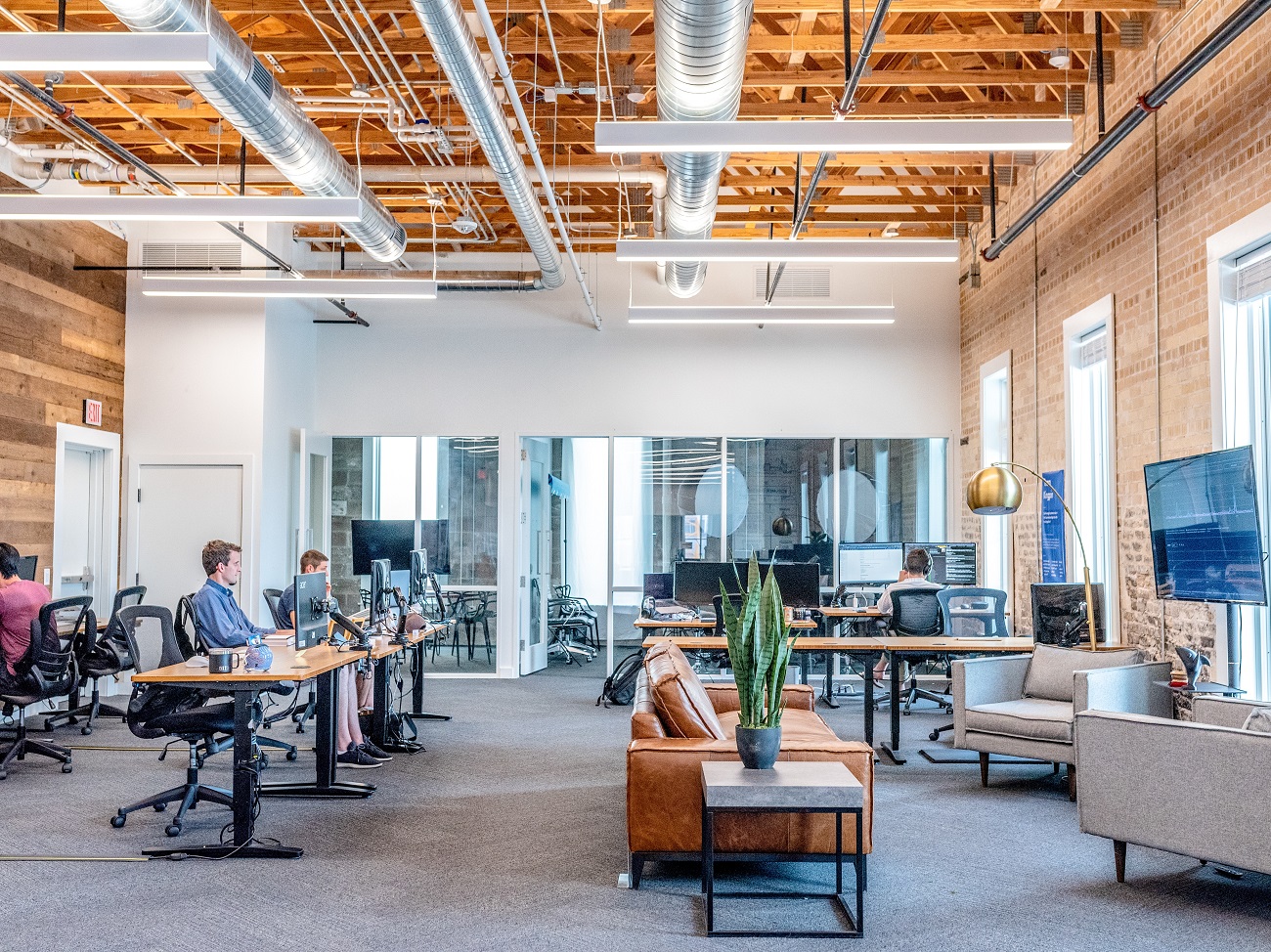
49. Mould
Mould can form in kitchens, bathrooms and even an office due to electronics creating a warmer environment, the increase of mould can trigger allergic reactions, asthma episodes and potential complications in pregnant staff.
50. Loud Noise Levels
Although not commonly associated with an office environment, hearing can easily be damaged by loud noises caused by external influences such as building work, headphones and telephones.
51. Smoking
Smoking can create a risk for your staff. To ensure that the workplace remains safe, employers must create designated smoking areas with a safe area to dispose of cigarettes to avoid any second-hand smoke or potential fire hazards.
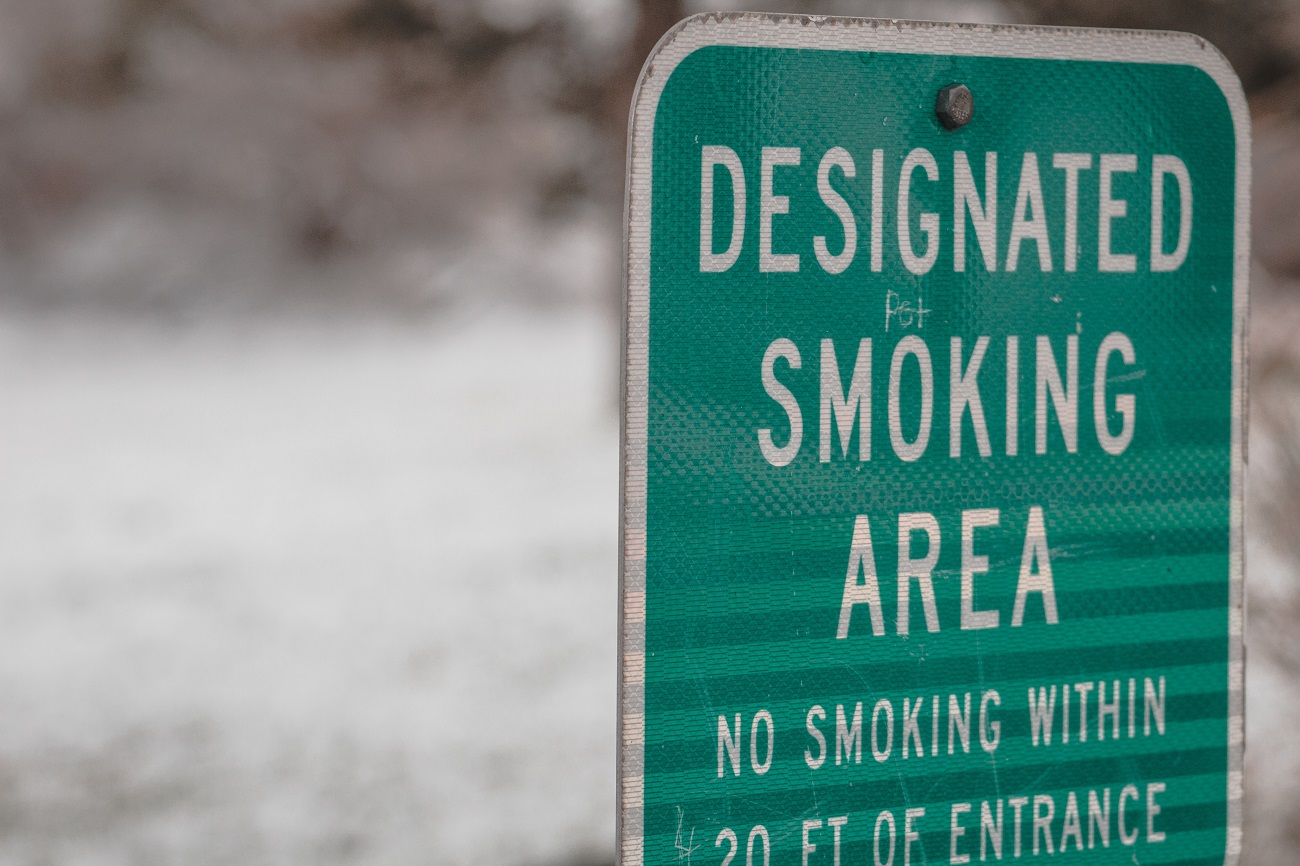
52. Blocked Exits
It is essential that any entrance or exit to the office isn’t blocked or restricted in any way to avoid any accidents or in the event of a fire.
53. Wet Conditions
Wet conditions such as kitchens, windows and bathrooms and result in any nearby electrical appliances becoming wet and potentially causing a fire or electrocuting an employee.
54. Chemical Spillages
Chemical spillages must be dealt with immediately and appropriately to avoid them coming into contact with food, appliances or cause an employee to slip. In extreme cases chemicals could even result in burns to the skin or worse if the chemical is consumed or inhaled.
55. Illness
Due to the warm atmosphere and close spaces between employees, illness can spread around an office with ease. Helping employees deal with illness including encouraging working from home and providing sick pay helps prevent sickness spreading around the office.
56. Faulty Equipment
Office hazards and injuries can occur with any faulty equipment, such as broken office equipment, furniture or electricals. It is vital for employers to carry out regular health and safety checks to reduce any risks or potential hazards.
57. Mental Health
As well as being prepared for stress, it is also important that employers are aware and sympathetic to other mental health issues, whether ongoing or new. Stress and other mental health issues amongst other complications have been known to lower immune systems making employees more susceptible to illness.
58. Strangers
People who aren’t part of your team can enter your office resulting in a hazard. Even people who are visiting or invited into the office could fail to follow your health and safety rules and accidentally cause a hazard.

Reasons to Ensure Your Office is Safe
As a result of actively following health and safety rules and regulations, you can ensure that your employees can carry out their roles safely.
If simply keeping your staff safe isn’t enough to motivate you to follow health and safety protocols, then you may want to read these other benefits of having a safe working environment.
59. Reduced Absence
By ensuring that your office is a safe working environment, you are showing you care about the well-being of your staff.
Keeping the workplace clean also helps prevent illness or infection spreading.
Improved health and safety also means your staff are less likely to need time off due to being injured or ill at work.
60. Improved Reputation
Having a tight grip on workplace health and safety will help ensure that your business appears strong and well organised and looked after from inside and out.
This will result in an improved reputation and therefore an increase in people wanting to work for you and other businesses wanting to work with you.
61. Staff Retention
It goes without saying that if you have poor health and safety, staff aren’t going to want to continue working for your business. By increasing your health and safety and treating your staff better, they are more likely to stay working for your business.
62. Save Money
It is obvious that preventing workplace hazards, accidents and injuries by providing your staff with excellent health and safety standards also prevents any potential lawsuits will save money. However having good health and safety can also act in your favour when looking for insurance, in the same way that having no claims helps your car insurance.
63. Improve Productivity
Increased productivity amongst staff is likely to occur alongside the improved morale and lowered absence rate brought to you by having great health and safety.
64. Reduced Risks
No matter what business you run, occasionally accidents are inevitable, but by ensuring that your business and your staff meet health and safety requirements, then you can significantly reduce the likelihood of any incidents occurring.
What Safety Precautions You Should Take To Ensure Your Office Is Safe
In order to protect your staff and receive the benefits of a safe working environment, as an employer, you need to ensure that it is actually safe. Here are our top safety precautions you should follow to meet your health and safety commitment.
65. Conduct Risk Assessments
Regular risk assessments are a sure way to ensure your workplace is safe by locating and eliminating any potential risks. This can be further improved by encouraging your staff to keep their eyes out for hazards, report any risks and to conduct their own assessments if they spot something.
66. Portable Appliance Testing (PAT)
Portable appliance testing often referred to as PAT testing is the examination of any electrical equipment or appliances to make certain there are no defects. Portable appliance testing ensures that your electronic equipment is operating properly and therefore is far less likely to result in any kind of fire or short.
67. Wire Testing
Similar to PAT, wire tests ensure electrical safety, by checking the wiring within a building. Ensuring that the electrical wiring within the building is safe and operating correctly, you are avoiding any potential fires or electrocution which could occur.
68. Health and Safety Inductions and Testing
Conducting health and safety inductions and training for your staff can help you keep on top of any risks within the workplace as well as confirming that they are correctly trained for everything that they do in order to avoid injury.
You must ensure once you have trained your staff that they don’t forget their training. Simple health and safety tests can be conducted similarly to a fire drill to ensure that your staff understand what is expected of them and haven’t forgotten their training if a situation occurs where they have to deal with an injured person or they spot a risk.
69. Periodic Fire Drills
Regular fire drills ensure that fire alarms work and are regularly serviced, employees know how to act and where to go when the fire alarms go off and that is how they must act in the event of a real fire.
70. Service Fire Extinguishers
It is recommended that fire extinguishers are checked periodically to ensure that they are still operable and that they haven’t accidentally been tampered with.
If there are different types of fire extinguishers within your office it is also important that they are placed in the correct areas and your staff know which is the correct one to use depending on the situation.
71. Periodically Check Fire Exits and Signs
In the event of a fire, you may have to exit a building through an exit you haven’t used before. This means that it is essential for the closest fire exit to be clearly marked and that you are able to exit through it.
72. Stay Clutter-Free
Any effort to remove clutter from the workplace, especially an office with limited space, will help to limit the likelihood of any accidents. This can come in many different forms, including shelving and coat hangers.
73. Have Accessible Steps
In an office, one of the most common injuries are as a result of using a piece of equipment, such as a chair as something to stand on. If you store anything in high places, ensure that there is a safe step or ladder nearby and that people know how to use them.
74. Watch Where You’re Going
Offices have a lot less room than other workspaces and failing to look where you are going is one of the biggest causes of slips, trips and falls. Use your common sense and watch where you are going to ensure that you are less likely to bump into something/someone, trip or slip.
75. Grippy Surfaces
Having floors that have a lot of traction and are less slippery when wet can significantly reduce the risk of people slipping and injuring themselves.
76. Closed Storage
By making sure cupboards, drawers and anything else that can be closed are closed when not in use. This can reduce the chances of injury.
77. Adjustable Equipment
When looking at office health and safety, it is important to remember that everyone is different, which means that when it comes to office equipment, one size does not fit all.
Every employee will need different office equipment to suit them and by providing chairs, tables and other office equipment that are adjustable, you can ensure your employees are comfortable and not at risk of potential injuries.
78. Periodical Equipment Maintenance
Failing to maintain equipment can easily result in an injured employee. This is why it is important that all equipment is regularly checked and maintained to avoid any accidental injury.
79. Ensure Areas Are Clean
Without proper cleaning, an office can easily become a mess and as a result, a danger to staff. With a large number of people in a small area, offices can quickly become unclean and prone to spreading bad bacteria, causing illness., A cleaner or ensuring internal cleaning routines are followed will help to ensure the office is a safe environment.
80. Regular Checks
Safety checks need to be conducted regularly in every area alongside risk assessments. Areas such as bins, bathrooms and other areas if neglected can quickly become a risk, regular assessments ensure that employees and visitors are safe and not at risk of injury.
81. Lighting
By ensuring that there is sufficient lighting everywhere in the workplace, you are helping lower the risk of trips, slips and falls as well as protecting your employees’ eyes.
By providing good lighting for your employees you are also avoiding eye strain. Eye strain can occur as a result of using computers or reading with poor lighting and has been known to cause headaches and migraines.
82. Assigned Health and Safety
An assigned health and safety ‘champion’ or ‘officer’ ensures that the safety and wellbeing of all staff are always being actively monitored and that the workplace is abiding by health and safety rules and regulations.
Larger businesses should also hire a paid Health and Safety Executive as part of their Human Resources department to advise on and ensure safety within the work environment as well as other roles and other responsibilities
83. Working From Home Policies and Sick Pay
Granting staff the ability to work from home when ill or encouraging them to take time off alongside giving them sick pay helps prevent sickness from spreading, resulting in a safer workplace and higher staff morale.
84. Encourage Staff Reporting
Giving a clear method for employees to be able to report risks and encouraging them to do so will help a business to stay on top of health and safety.
85. Rewarding
There are many different situations where you can use rewards to help keep your workspace safe and risk-free such as rewarding staff for following health and safety or for reporting a risk that was later removed as a result.
86. Grievance or Arguing
Setting up a policy for diffusing situations can help to avoid any conflict or added stress within the workplace.
87. Safety Precautions
After finding a risk, setting up appropriate physical precautions to avoid any accidents, such as handrails, is a good way to directly improve health and safety in the workplace.
88. Signage
It is important that fire exits and any potential hazard which cannot be removed all have correct working signs, such as ‘mind your head’ or ‘mind the step’.
89. Regular Breaks
For staff who are sat at their desks for the majority of the day, it is important to have the option to get up and move about to rest their eyes and stretch their bodies.
90. Automation
Anything that can be automated will likely improve health and safety, from reducing repetitive strain to avoiding physical injuries. Even simple automation such as an automatic door reduces the chance of staff being hit by an opening door.
91. Designated Phone Areas
Removing phone usage outside of specific areas ensures that people who are walking about are not distracted allowing them to focus on where they are going and what is going on around you.
92. Travel Guidelines
Whenever an employee is travelling for work, it is important that they are given guidelines, including what parts of the trip are covered by work, what is expected of them and that they should act as if they were still in the office during the trip.
If an employee takes part in a business trip or any travelling on behalf of the company it is advised that the company provides any necessary insurance. This ensures that you are looking after your employee and helps to guarantee that they are insured on the trip and that they are covered in the event of an accident.
93. Out Of Office Guidelines
Out of office guidelines include working from home and should protect you by outlining how an employee should act and who should ensure the environment is safe to avoid any accidents.
94. Broken Equipment Guidelines
If any equipment is damaged, there should be guidelines depending on the equipment to stop employees from damaging the equipment more or injuring themselves.
95. Situational Guidelines
By preparing for unexpected or rare events, you can reduce the chances of accidents occurring. This can include how to deal with situations such as an aggressive member of the public entering the workplace.
96. Report Injuries
Although reporting an injury at the time will not stop that injury, it ensures that it is documented for any potential escalation and allows you to address how it happened and therefore, allows you to create actions to avoid it occurring in the future.
97. First Aid Kits
Although a first aid kit will not stop the incident from occurring, it can be used to reduce the result of the accident.
98. Secure Entrance/Exits
Adding a security function to your office, such as a key-pass or lock limits the opportunity for strangers or anyone who shouldn’t be in the office getting into the office.
99. Monitor Visitors/Non-Employees
Ensure that people who aren’t employed or are visiting the office are made aware of health and safety rules, especially fire exits to ensure their safety.
As you can see, health and safety can be very complex with many aspects being far too easy to overlook when thinking about the future of your business.
We hope that this blog has helped highlight all the areas of health and safety you need to focus on within an office.
Did we mention something that you have overlooked – how do you ensure it doesn’t get overlooked in future? Or was there something you think that we missed? Let us know in the comments.

